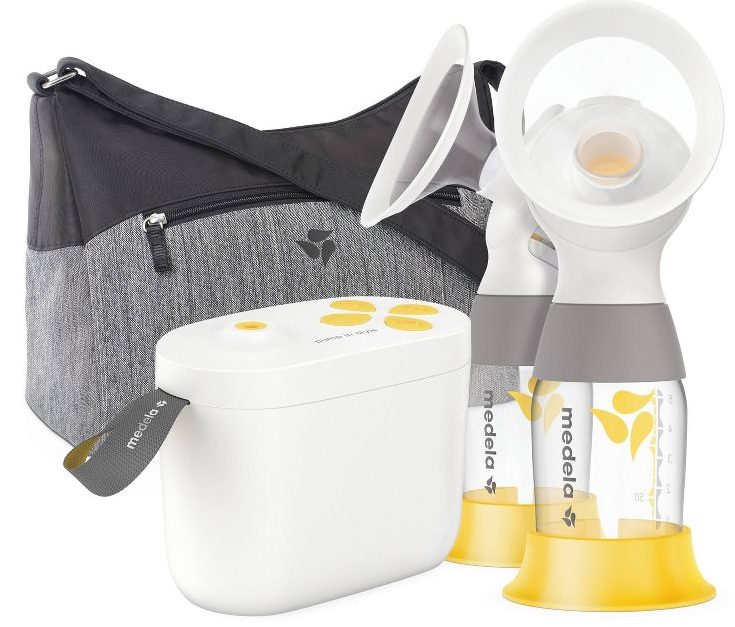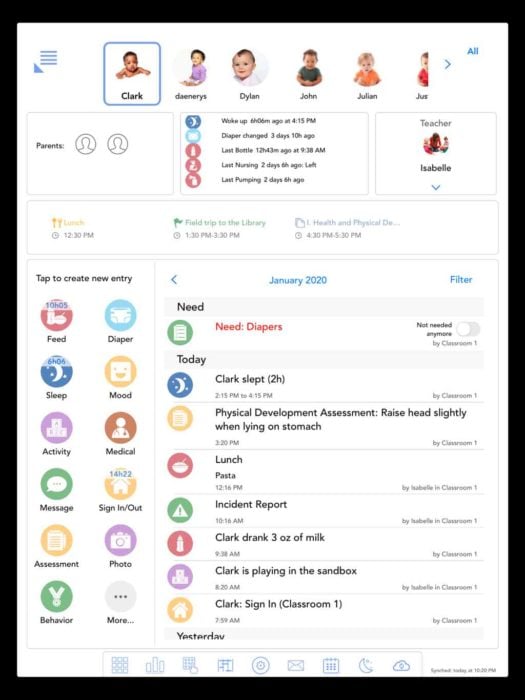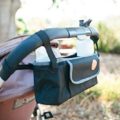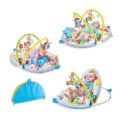Ah, the joy of preparing for a new baby! Stockpiling tiny sleepers, making lists of names, picking out adorable crib sheets and … researching breast pumps!
OK, so maybe contemplating breast pumps isn’t at the top of your list of fun things to do during your third trimester. Maybe you don’t know if you really need one. Maybe you’re overwhelmed by the options. Here’s what you need to know, now.
Do I really need a pump?
“Not all breastfeeding mothers need a pump,” said Brielle Stoyke, certified nurse midwife (CNM) and international board-certified lactation consultant (IBCLC). “However, a breast pump can be helpful if a baby is having trouble nursing, to keep up or improve milk supply, to help treat engorgement, or if mother and
Baby are separated for work, medical situations or just date night.”
Sara Pearce, the founder of Amma Parenting Center (and a CNM and IBCLC), said any working mother who’s away from her baby for more than about 20 hours a week should consider a double-electric pump.
“Even if you are working less than that, a double-electric pump will most often get out the most milk the fastest, which is important when you only have a short break for pumping,” she said.
Popular pumps
Breast pumps come in a few basic styles — single or double-sided, and electric, manual or battery powered. As Pearce said, many mothers will likely be in the market for a double-electric breast pump, and there are a variety of available options that have come a long way in recent years in terms of portability and power.
One of the best-selling breast pumps on the market today is the Medela Pump In Style (pictured, above, with a backpack). It’s easy to find and comes highly recommended by the folks at workandpump.com, a website that provides breastfeeding information for working mothers. It typically costs $200 to $300.
There are benefits to owning such a popular pump: Replacement parts are widely available at stores such as Target, Walgreens and CVS.
Another good double-electric pump is the Ameda Purely Yours. It’s similar to the Pump In Style in durability and overall performance, but it’s usually less expensive (available for as little as $150). One downside to owning this lesser-known pump is the fact that replacement parts can be harder to find, so you might need to order them online.
Mothers who opt for electric pumps may also want to keep a manual pump on hand for long car trips and air travel. Some working women opt to leave their electric pump at work and keep their manual pump at home.
Hospital-grade pumps
There are also high-end hospital-grade breast pumps designed to accommodate multiple users over a number of years. Mothers purchase their own pump kits, which cost about $50.
You’re likely to encounter one of these pumps — such as the Medela Symphony or the Ameda Elite — if you deliver in a hospital and start pumping before you check out.
Hospital-grade pumps cost $1,000 to more than $2,000 and are available to rent from medical supply companies, lactation consultants and other sources, typically for about $50 a month.
You might want to rent one if you’re not sure how long you’ll need to use a breast pump. Check with your health insurance company to see about coverage for rental fees.
Insurance matters
Even if you decide to conduct hours of research into breast pumps, your insurance carrier might have their own thoughts about which pump they’ll cover.
So before you spend too much time finding a favorite, be sure to contact your insurance company and ask about breast pump coverage. (See below for more step-by-step information about getting a breast pump.)
Pumps to avoid
- Single-sided electric pumps are generally overpriced for what you get. They tend to be of lower quality and aren’t meant to be used full time.
- Battery-powered pumps: Pumps designed to run solely on batteries don’t generate enough suction to extract enough milk or maintain your milk supply. (However, this isn’t the case with electric pumps that have the option of running on batteries.)
- Plunger-style manual pumps: These are okay for emergencies, but are awkward and tiring to use and don’t generate enough suction to maintain your milk supply.
When to start pumping
Every mother’s experience with pumping is different. Some will start pumping shortly after birth if they’re away from their babies (during stays in the neonatal intensive care unit, for example).
Some will start pumping a few weeks after giving birth when they’re preparing to introduce a bottle. Some will pump to increase their milk supply.
But what about going back to work?
“If you are pumping in preparation for a return to work, in most cases, you will want to start pumping approximately two weeks before you plan to return,” Stoyke said. “I recommend pumping after the baby eats so you aren’t using milk the baby needs. Then you slowly increase pumping day by day so you don’t give your breasts the message to make too much milk.”
And don’t pump too many times throughout the day and night, she said. You still need to get enough sleep!
Other tips?
“Studies show that breast compression and massage can increase milk output by 40 to 70 percent,” said Pearce. “I suggest massaging and compressing the breasts right before and during pumping. This is easiest if you have a hands-free bustier.”
Medela and other pump makers sell pump-compatible bustiers and bras for $30 or $40, allowing moms to pump hands free.
Stoyke emphasizes the importance of asking for help if you have questions.
“The tough thing about giving breastfeeding advice is you can’t give universal advice — every woman is different,” she said. “Contact an international board-certified lactation consultant if you have any questions.”
How and when to get a pump
Call your insurance company.
In most cases, insurance will pay for at least some of the cost of a pump.
Some providers require patients to use specific medical-supply companies. Some require families to buy a pump from a retail store and submit a receipt. Providers have different rules, so be sure to ask before taking any action.
Wait for Baby to arrive.
Every new mother wants to be prepared for her baby, and you might be tempted to run out and buy your pump during your second trimester. But there are a few good reasons to wait.
“I suggest waiting until the baby is born before you get your pump,” said Pearce. “You want to match the pump with your needs, and if you don’t know your needs yet, you can’t make the most accurate selection.”
If you purchase a basic model, but then end up with a low milk supply — and need a hospital-grade model — you’ll have wasted money.
“Under typical circumstances, a new mother won’t need to pump for a few weeks — when she introduces a bottle — so you’ll usually have time postpartum to figure it out,” Pearce said.
Find the right physical fit.
In addition to learning how to set up and use your new pump, you’ll also want to make sure the equipment fits your new, unique, postpartum anatomy.
In other words, make sure the flanges fit correctly.
“The flanges are the flare-shaped plastic parts that fit over the breast, and the tubes that fit the nipple come in different diameters,” said Pearce. “You can’t tell by looking at your breast, or your cup size, what your flange size should be — you just have to try it out. If it’s too tight or too large it can result in pain or decreased milk output.”
Learn more
- Consumer Reports: Read a detailed breast-pump primer, including pros and cons for each type.
- Kelly Mom Parenting and Breastfeeding offers evidence-based information.
- La Leche League: This organization is dedicated to providing education and encouragement to women who want to breastfeed, including support via email, phone and regular meetings. Click here to find a group in your area.
- Ask around: Talk to your midwife, obstetrician or pediatrician for referrals to International Board Certified Lactation Consultants.




















